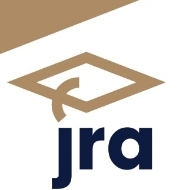How Recent Federal Legislation Could Impact College Financial Aid and Student Loans in 2025-2026
Regardless of one's political perspective, there is a reality to the impact of newly proposed federal education legislation. Whether you are looking at an undergraduate degree, or a graduate program, the implications for college financial aid access and student loan eligibility are significant.
Major Changes to Federal Student Aid Programs
According to the National Association of College Admission Counselors (NACAC), the following changes are proposed to take place:
Pell Grant Eligibility Restrictions (2026)
Pell Grants, beginning in 2026, will have new eligibility restrictions. Foreign income will be included in the formula. High Student Aid Index (SAI) may disqualify some families as well, potentially affecting college affordability for middle-income students.
Graduate Student Loan Elimination
Graduate and professional PLUS loans will be eliminated beginning 7/1/26. Borrowing limits will apply to graduate students and parents, potentially moving more borrowing from the private (more expensive) sector, or discouraging advanced degrees. Yes, medical school applicants - they ARE including you here. Currently, the limits are $100,000 for graduate students, $200,000 for professional degree students or those who are pursuing both, like MD/PhD candidates. Parents currently can borrow up to $65,000 for dependent students through Federal Direct Parent PLUS Loans.
Student Loan Repayment Plan Changes
Income driven repayment plans are eliminated under the current bill. The only options will be a standard repayment plan (10-25 years, based on principal) and Repayment Assistance Plan, which extends the terms to 30 years, and increases the monthly payments, even if the borrower has an income below the poverty level. For current borrowers, the monthly loan payments will increase by as much as 50%.
Private College Endowment Tax Impact
There will be a tiered excise tax on investment income earned by private colleges with large endowments. The end result is likely to be a reduction of student aid available from those schools; fewer scholarships, tuition increases are two potential outcomes, significantly impacting low and middle class students who rely on institutional financial aid.
SNAP Benefits and Food Security
There will be increasing work requirements and reductions in SNAP eligibility, putting vulnerable students into positions of increasing food insecurity on college campuses.
What This Means for College-Bound Students and Families
And that's just the tip of the iceberg. Families of current AND future students should be following this news closely, consulting with educational consultants and financial aid advisors for guidance as they proceed with the college application process.
Key Takeaways for College Planning:
Review your Expected Family Contribution (EFC) calculations
Explore scholarship opportunities early
Consider state financial aid programs as federal aid becomes more restrictive
Consult with college financial aid offices about institutional aid options
Stay informed about federal student aid changes and college affordability issues by following official government sources and trusted educational news outlets.
